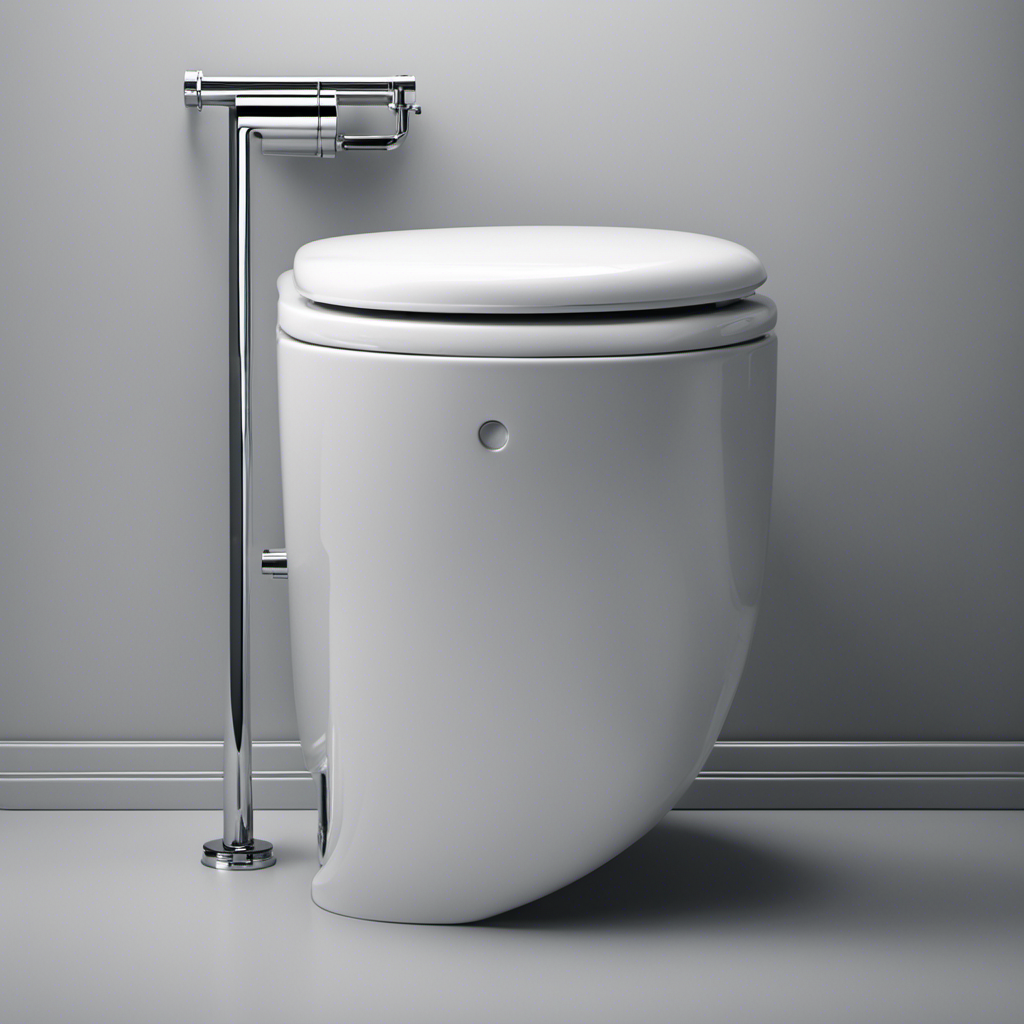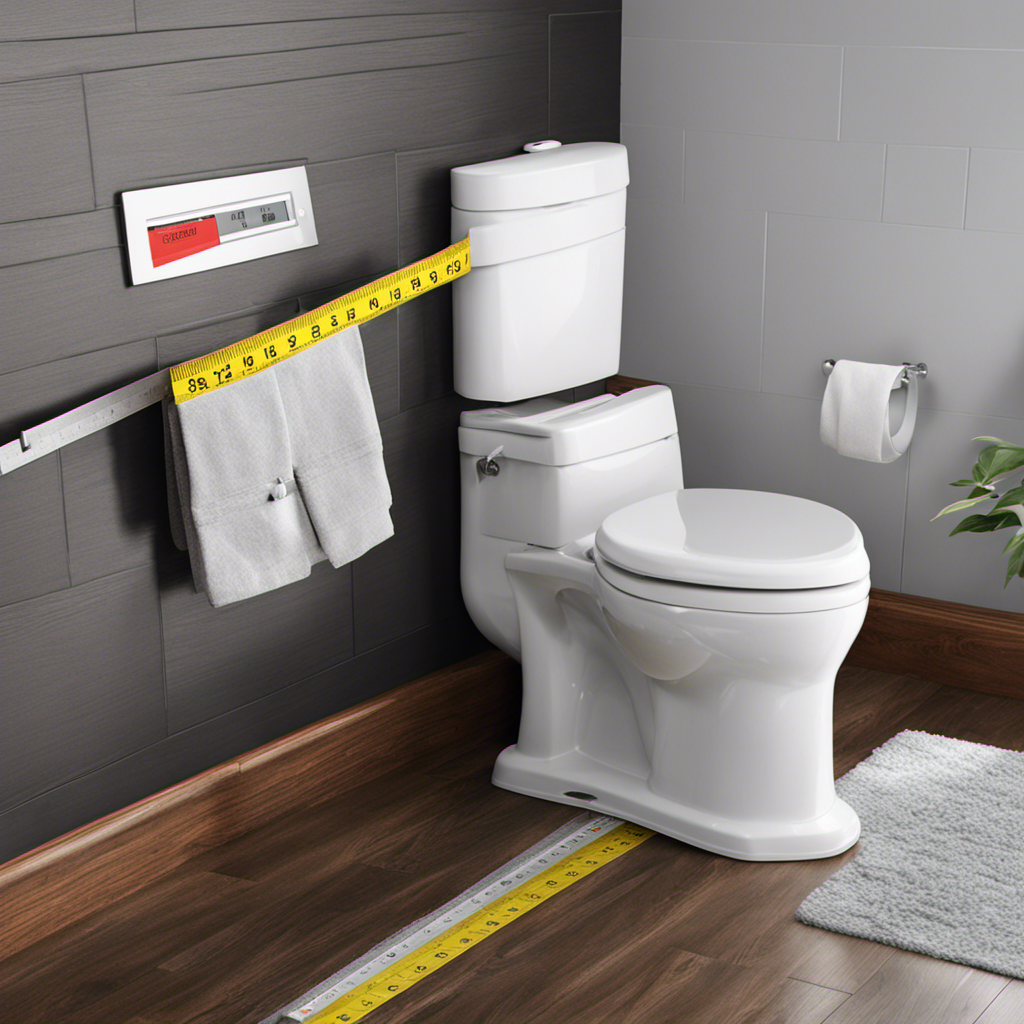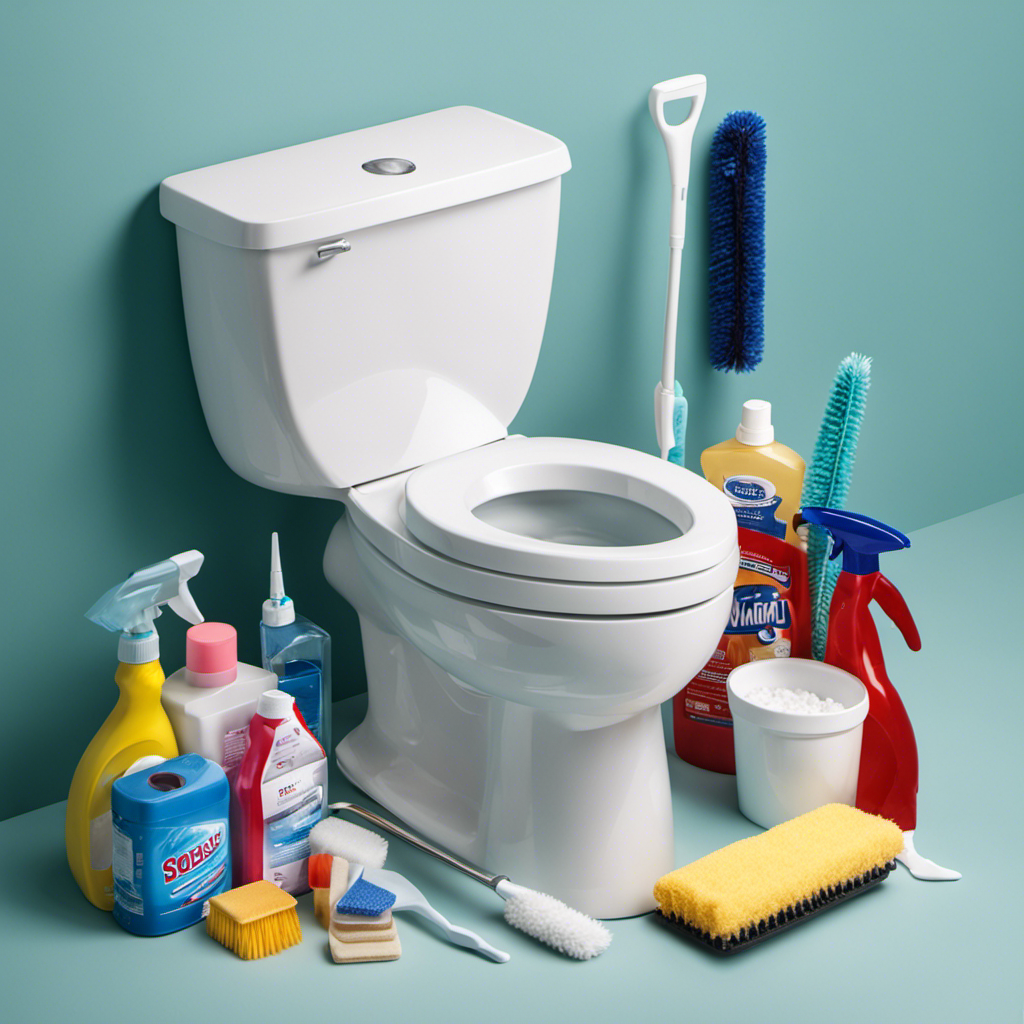So, you’ve got a toilet that just won’t quit running. Trust me, I feel your frustration. But fear not, because I’ve got the solution for you.
In this article, I’ll guide you through the step-by-step process to make your toilet stop running once and for all. From identifying the cause of the problem to adjusting the necessary components, we’ll cover everything you need to know.
Get ready to say goodbye to that annoying running toilet!
Key Takeaways
- Troubleshoot common toilet problems
- Adjust the float or fill valve to prevent the float from not rising enough
- Replace the flapper or flush valve if necessary
- Clean or replace the overflow tube to stop continuous water leakage
Identify the Cause of the Running Toilet
To fix a running toilet, you’ll need to figure out what’s causing the issue. Troubleshooting common toilet problems is the first step in identifying the cause.
Start by checking the fill valve, which is responsible for regulating the water level in the tank. Ensure that it is functioning properly and not stuck in the open position.
Next, examine the flapper valve, which controls the flow of water from the tank to the bowl. If it is worn or damaged, it may not be sealing properly, causing the toilet to run continuously.
Finally, check for any leaks or cracks in the tank or bowl that could be causing water to escape.
Once you have identified the problem, finding the right replacement parts, such as a new fill valve or flapper valve, will be necessary to fix the running toilet.
Adjust the Float or Fill Valve
Adjusting the float or fill valve can help prevent the toilet from continuously running. Here’s how you can troubleshoot common issues and understand the mechanics of your toilet:
-
Locate the float and fill valve: The float is usually a ball or cup-shaped device connected to the fill valve. The fill valve controls the water level in the toilet tank.
-
Adjust the water level: If the water level is too high, the float may not rise enough to shut off the fill valve. To adjust it, simply turn the screw or knob on the fill valve to lower the water level.
-
Check for leaks: Ensure that the fill valve is tightly secured and that there are no visible leaks around it. Leaks can cause the toilet to continuously run.
-
Test the toilet: Flush the toilet and observe if it stops running after the tank is refilled. If it continues to run, you may need to replace the flapper or flush valve.
By adjusting the float or fill valve, you can effectively troubleshoot and resolve common issues with a running toilet.
Now, let’s move on to the next step: replacing the flapper or flush valve.
Replace the Flapper or Flush Valve
Now you can easily troubleshoot and resolve common issues with a running toilet by replacing the flapper or flush valve.
When a toilet keeps running, it’s often due to a faulty flapper or flush valve. The flapper is a rubber seal that sits at the bottom of the tank and controls the flow of water into the bowl. Over time, the flapper can become worn or warped, causing water to continuously leak into the bowl.
Similarly, the flush valve, which is responsible for releasing water from the tank into the bowl during a flush, can also wear out and lead to a running toilet.
To replace the flapper or flush valve, start by shutting off the water supply to the toilet. Remove the old flapper or flush valve and install a new one according to the manufacturer’s instructions.
This simple maintenance task can save you from wasting water and help you troubleshoot and resolve running toilet issues effectively.
Clean or Replace the Overflow Tube
If your toilet is constantly running, one possible solution is to clean or replace the overflow tube. The overflow tube is an essential part of the toilet’s flushing mechanism that prevents water from overflowing and causing damage. Over time, the tube can become clogged with debris or mineral buildup, leading to a continuous flow of water.
Here are some cleaning methods and troubleshooting tips to help you resolve the issue:
- Turn off the water supply to the toilet.
- Remove the tank lid and locate the overflow tube.
- Use a brush or sponge to clean the tube thoroughly.
- If cleaning doesn’t solve the problem, consider replacing the overflow tube with a new one.
By following these steps, you can effectively clean or replace the overflow tube and stop your toilet from running.
Remember to always exercise caution and turn off the water supply before performing any maintenance tasks.
Check and Adjust the Water Level in the Tank
To ensure your toilet functions properly, check and adjust the water level in the tank. Maintaining the correct water level is crucial for the efficient and effective operation of your toilet. A water level that is too high can cause constant running, while a water level that is too low can result in weak flushing. Troubleshooting the water level in your toilet tank is a simple DIY task that can save you money on repairs and prevent water wastage. Here is a table outlining the steps to check and adjust the water level in your toilet tank:
| Step | Action |
|---|---|
| 1 | Turn off the water supply to the toilet |
| 2 | Remove the tank lid |
| 3 | Locate the fill valve |
| 4 | Adjust the water level by turning the adjustment screw or float |
| 5 | Flush the toilet and check the water level again |
Frequently Asked Questions
How Do I Know if the Fill Valve Is Adjustable?
I can determine if the fill valve is adjustable by examining its design and checking for any adjustable components. Troubleshooting the fill valve involves identifying and addressing any issues with water flow or valve settings.
Can I Replace the Flapper Without Turning off the Water Supply?
No, you cannot replace the flapper without turning off the water supply. To stop a running toilet, first, locate the water supply valve behind the toilet and turn it off. Then, follow the steps for toilet flapper replacements and troubleshooting toilet noises.
Should I Clean the Overflow Tube or Replace It?
To stop a running toilet, start by troubleshooting the issue. Cleaning the overflow tube may help, but if that doesn’t work, replacing it might be necessary. Follow proper cleaning methods and troubleshooting steps for best results.
How Can I Check the Water Level in the Tank Without Removing the Lid?
To check the water level in the tank without removing the lid, there are alternative methods you can try. You can use a flashlight or a handheld mirror to get a clear view. Troubleshooting tips are available online for further assistance.
Are There Any Other Possible Causes for a Running Toilet Besides Those Mentioned?
There are several possible causes for a running toilet, including a faulty flapper, a loose or damaged fill valve, or a problem with the float. Troubleshooting tips can help identify and fix the issue.
Conclusion
In conclusion, fixing a running toilet is a simple task that can save you money on water bills and prevent unnecessary water wastage. By identifying the cause of the problem and making the necessary adjustments or replacements, you can easily fix a running toilet in no time.
Did you know that a running toilet can waste up to 200 gallons of water per day? Taking the time to fix this issue can have a significant impact on water conservation efforts.
So don’t ignore a running toilet, take action and make a difference.










